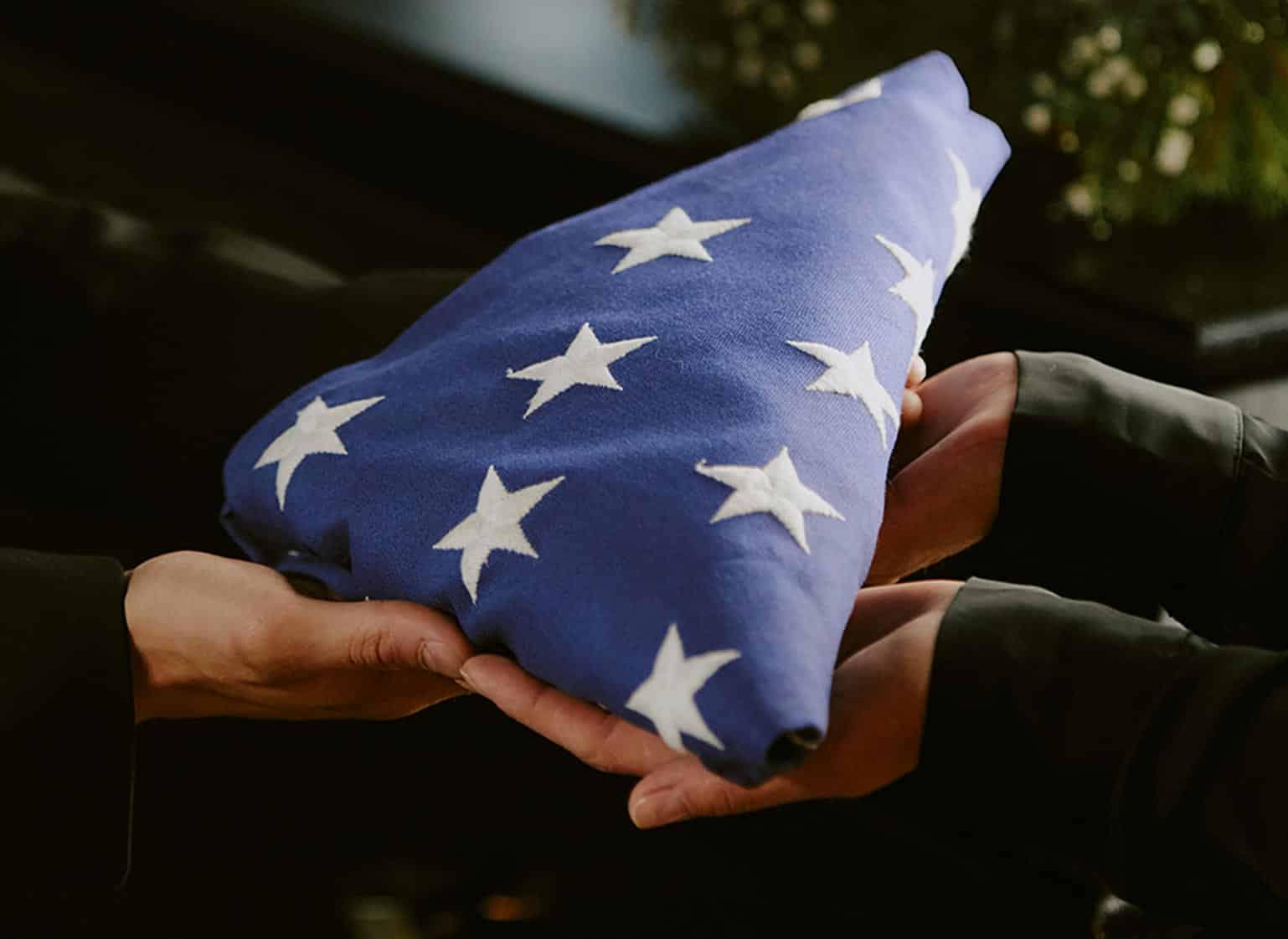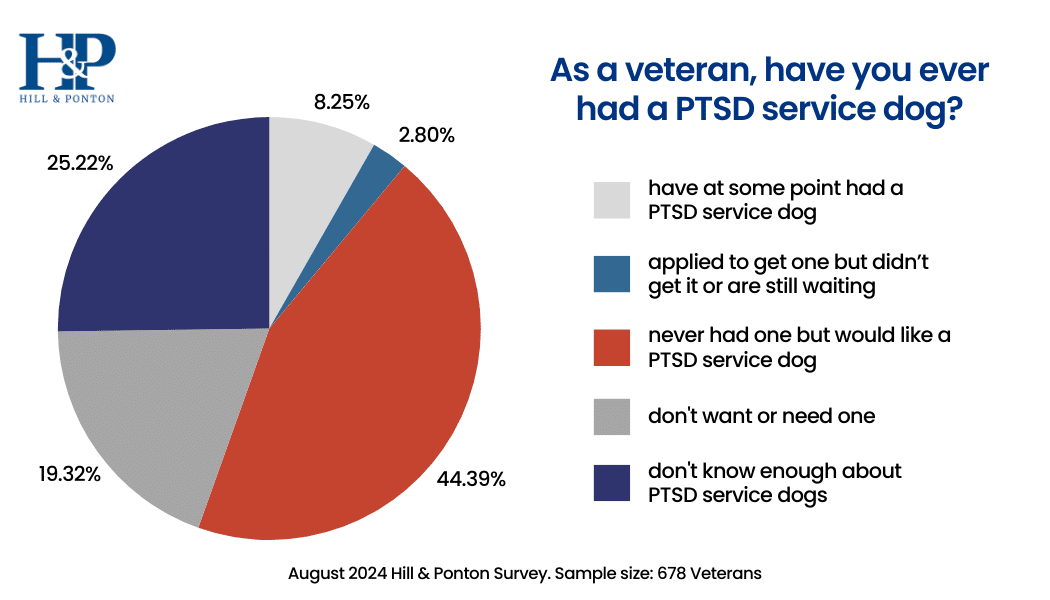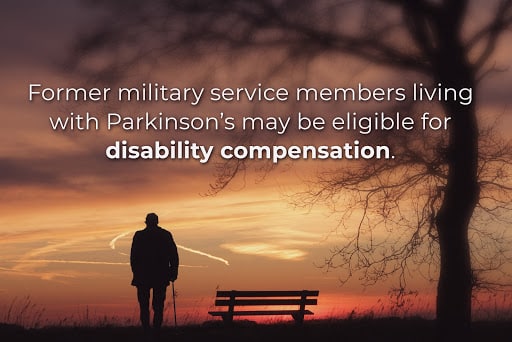
Military veterans currently number 17.4 million people in the United States. To put this into perspective, there were only 1.9 million veterans after the Civil War. The massively heroic group of veterans, however, are often dealing with an entirely new set of physical and mental health problems upon their return home. Considering the escalation of today’s training techniques and battle operations, it’s safe to say modern care solutions and access have struggled to keep up.
And while the physical pain may be visible, the unseen mental wear and tear can be even more detrimental to everyday life. More than 1 in 4 active duty members are thought to carry at least one mental health condition, which, if left untreated post-service, can become exacerbated, especially into old age.
Using comprehensive nationwide data from the Centers for Disease Control and Prevention’s (CDC) Behavioral Risk Factor Surveillance System (BRFSS), we were able to isolate information on veterans today and get a better look at how they are maintaining their physical and mental health. Are they getting the care they need? Are they maintaining healthy habits? Are they coping with particular substances? Keep reading to learn all this and more about today’s veterans in the U.S.
Insuring Our Vets
Our study starts with a look at health insurance among U.S. veterans today – whether they have it, what kind they have, and how often they’re going to see a doctor.
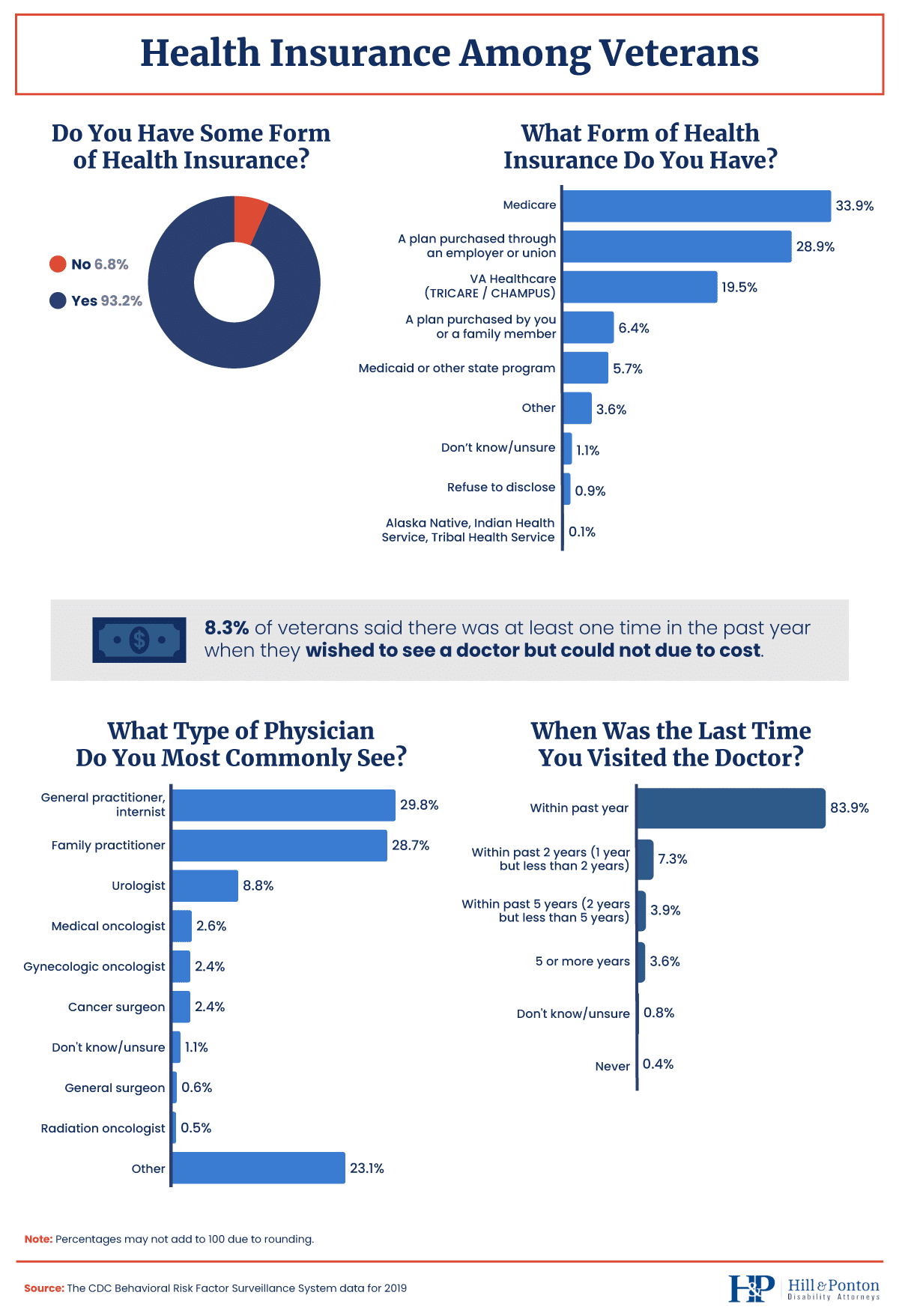
Thankfully, most veterans today are insured. Just over 93% are covered under some type of health insurance policy. Considering the extent of the problems many face, however, that coverage may not be adequate. Most often, they are covered under Medicare (33.9%) or a plan purchased through their employer or union (28.9%).
In spite of these coverages, nearly 1 in 10 of these insured veterans said they were unable to see a doctor even when they needed to, specifically because of cost. Health care’s cost in the U.S. has been increasing at an alarming rate and is not projected to slow anytime soon. As a veteran, the need for this expensive care can be great, though the needs evidently remain unmet for some. Most often, veterans are just seeing their general medical practitioners (29.8%) about once per year (83.9%).
Mental Well-Being of Vets
While physical ailments are easier to see and study, mental health problems are often much more complicated and can be even more painful. The next part of our study looks at data surrounding the mental health of today’s vets.

For veterans today, mental health problems can present a formidable obstacle to returning to “normal” life post-service. Vets reported averaging 12.7 days per month where their mental health impairs them from normal activities.
Almost 16% have been diagnosed with a depressive disorder, which is more than double the prevalence of depressive disorders in typical adults in the U.S. Often, these disorders take the form of PTSD for veterans. PTSD is a condition triggered by a terrifying event, with symptoms that can include everything from flashbacks to nightmares, extreme anxiety, and uncontrollable thoughts about the event. Treatment is often complicated (and expensive) but clearly thoroughly needed.
Health Status of Today’s Vets
Although the public seems to maintain a general image of veteran health, it’s often based on preconceived notions or even gut-wrenching TV commercials. While there is truth behind these emotional takes on the experience, we wanted to consolidate a more data-backed perspective. The next part of our study looks at the overall physical health of veterans today, again based on BRFSS data from the CDC.
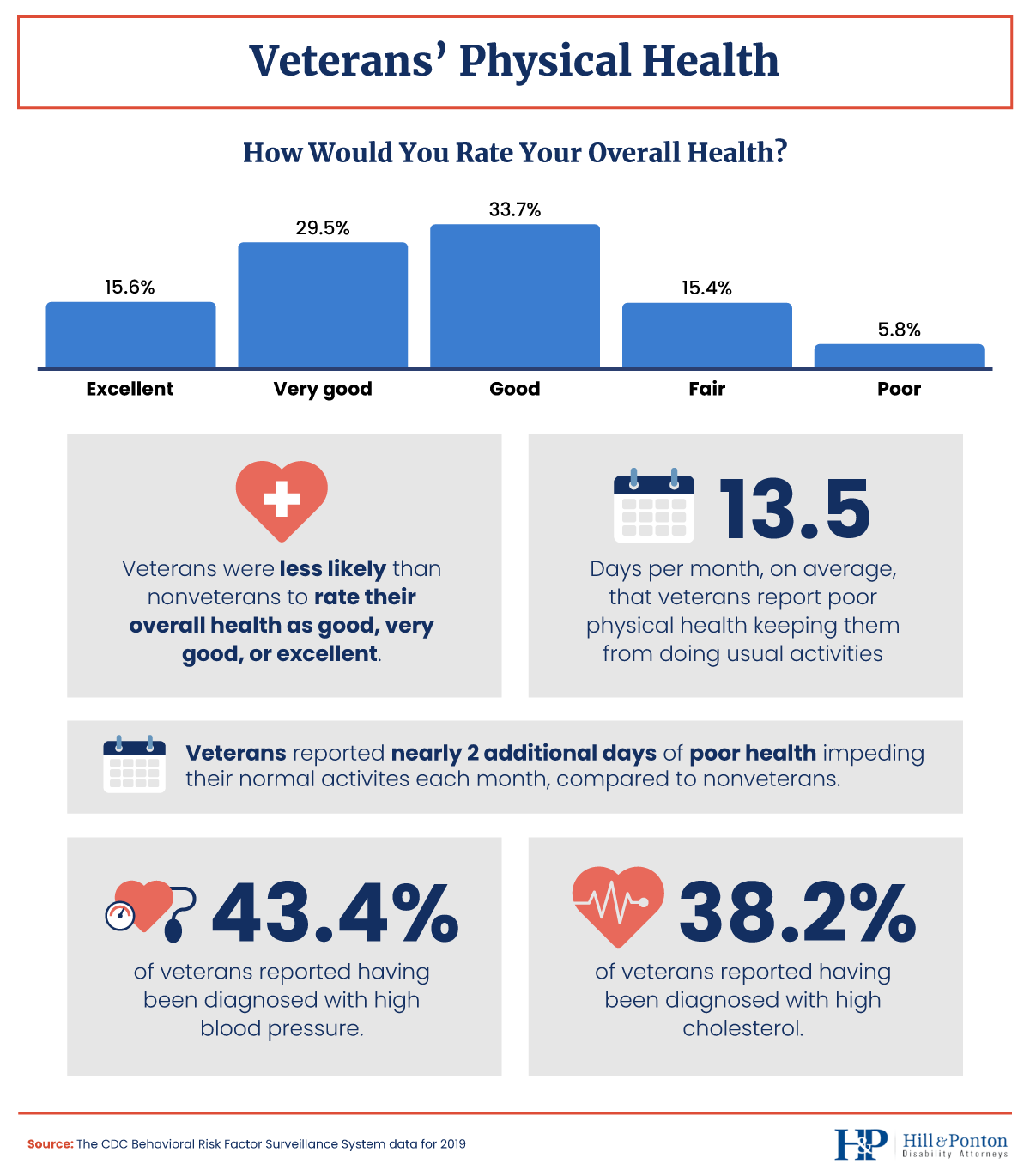
During service, veterans were at extreme risk for many injuries. Whether during combat or training, many of these injuries can be life-threatening or cause serious impairments. Common injuries incurred include the following:
- Shrapnel and gunshot wounds
- Lost limbs
- Head and brain injuries
- Tinnitus and hearing loss, typically from exposure to noise
- Sprains and strains
- Limited range of motion
As expected, these experiences did not bode well for physical health. More than 1 in 5 vets rated their overall physical health as less than good. It was also reported that veterans experience an average of 13.5 days every month where their physical problems prevent them from performing usual activities.
Although things like high blood pressure and high cholesterol may not sound as dangerous as a head injury, they are very real threats to the livelihood of many Americans. Heart disease is the leading cause of death for men and women in the U.S., to which both blood pressure and cholesterol are directly related. Unfortunately, 43.4% of veterans have been diagnosed with high blood pressure, and 38.2% have been diagnosed with high cholesterol.
Post-Service Regimens
The way a person treats their physical body will have an impact on health, regardless of past experiences. That said, veterans often carry the burden of some pretty unusual past experiences, increasing the need for practical health maintenance. The next part of this study looks at the ways in which they are able to care for their physical bodies post-service, i.e. exercise and eating.

Most veterans took to focusing on stress-relieving exercises like walking (44.8%) during a typical month but with limited frequency. On average, most veterans are only logging vigorous exercise 5.6 days per month and/or strength training 5.7 days per month. According to most health research, this is far below the frequency with which physical health is optimally maintained (at least 3 days a week), which may, in turn, increase veterans’ need for health care.
As far as eating was concerned, veteran habits were even worse than exercise habits. On average, they are consuming only one serving of fruit per day and only about two for vegetables. By comparison, veterans reported eating some form of fried potato 7.8 times each month, on average. French fries have been proven to raise cholesterol, which we previously noted was already high in this demographic.
Substance Use and Abuse
Even with proper treatment, veterans might look to other coping mechanisms that may not be as healthy for self-treatment. The last part of our study looked at the ways in which today’s veterans are using certain substances – alcohol, cigarettes, and marijuana – to handle their unique problems.
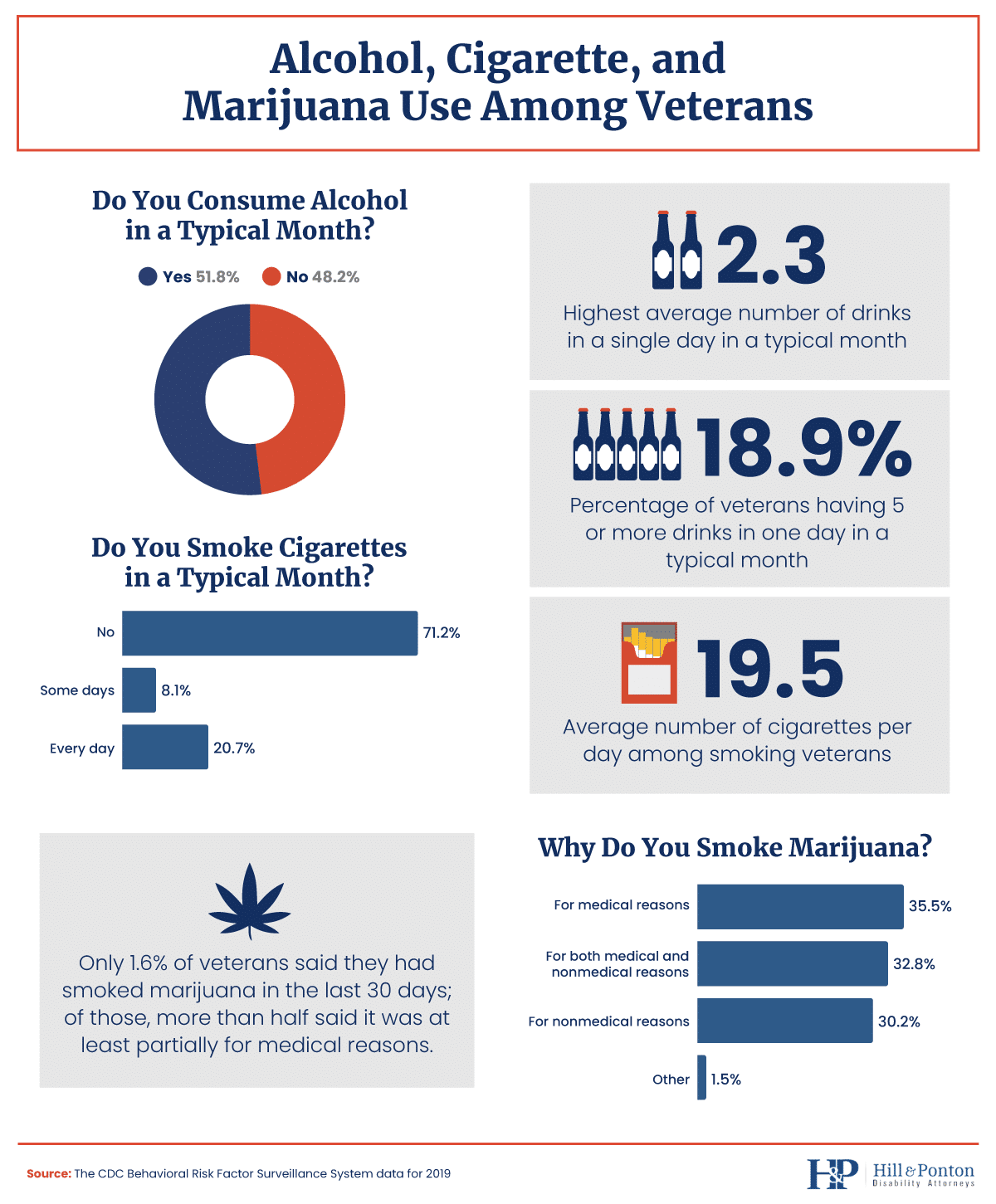
Slightly more than half of veterans consume alcohol in a typical month, which is roughly equivalent to what the standard American adult drinks monthly. Even on their biggest drinking days, veterans only averaged 2.3 drinks for the entirety of the day. That said, 18.9% of veterans reported having five or more drinks during at least one day in a typical month.
Even more concerning was the use of cigarettes, which were consumed nearly 20 times per day by those veterans who smoked. Marijuana usage was reported by just 1.6% of veterans, though most of them (35.5%) were using the substance specifically for medical reasons, which, of course, no one was able to say about cigarettes. Increasing amounts of scientific research are demonstrating marijuana’s ability to decrease the symptoms of PTSD, and as the substance becomes increasingly legal across the country, we may begin to see this form of treatment become even more common.
Veteran Futures
The service of a veteran clearly extends well beyond active service. As this study has evidenced, the repercussions of their time in the military continue well beyond those years and often escalate into everything from high blood pressure to depressive disorders. In combination with poor health habits and inadequate health care, it’s clear that these civil servants are in need of more.
Hill & Ponton would like to serve this need. As disability attorneys, we have helped thousands of veterans over the course of 30 years get access to the finances and help they need to function happily in daily life. If you or any veterans you know could use an extra dedicated hand, please contact Hill & Ponton today and let us help.
Methodology
Using data from the Centers for Disease Control and Prevention’s Behavioral Risk Factor Surveillance System (BRFSS), we looked at the physical and mental health of U.S. military veterans.
The BRFSS collects data from all 50 states, the District of Columbia, and three U.S. territories. All the data in this project were filtered to look solely at people that had served in active duty U.S. military, unless otherwise stated.
All data were weighted to ensure representative samples and removal of sampling bias. Weights were provided and calculated by the BRFSS.
Fair Use Statement
While veterans may be out of immediate physical danger upon completion of their service, their physical and mental health are important to maintain and monitor. If someone you know would benefit from the information in this project, you’re able to share for any noncommercial reuse. Please link back here so people can view the entire project and its methodology. This also gives credit to the contributors whose hard work makes projects like this possible.
